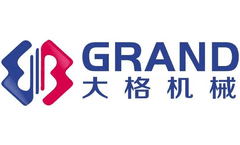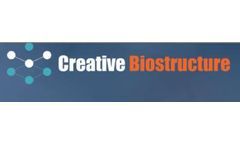Drug Release Articles & Analysis
63 articles found
Disintegrants: Disintegrants facilitate the breakdown of tablets into smaller particles upon contact with fluids, ensuring that the drug is released and absorbed effectively. Common disintegrants include sodium starch glycolate and croscarmellose sodium. ...
Whether it is medical research or drug manufacturing, tablet press is a vital link. Let's see how to choose the one that suits you best.Grand pack.The field of drug delivery is constantly evolving, driven by the core goal of improving therapeutic outcomes—enhancing efficacy, reducing toxicity, boosting patient compliance, and even enabling entirely new medical treatments. The global drug delivery ...
In our last blog, Peter discussed how AI is accelerating the drug discovery process and putting pressure on chemists, who must find ways of developing these potential drugs for subsequent testing or production. ...
ByBUCHI
Linker Optimization: The linker serves a crucial function in maintaining stability, controlling drug release, and ensuring effective delivery of the cytotoxic drug. ...
This versatility is essential for developing sustained-release drug delivery systems. On the other hand, PEG copolymers tend to have a moderate drug loading capacity, making them more suitable for hydrophilic drugs. ...
Unlike traditional methods, 3D printing allows the precise layering of active pharmaceutical ingredients (APIs), enabling the creation of intricate structures that optimize drug delivery. These films offer unique advantages in terms of dosage accuracy and controlled release, which are critical in pharmaceutical development. ...
Role of Liposomes in Drug Delivery The structure of liposomes, consisting of an aqueous core enclosed by a lipid bilayer, allows for the encapsulation of both hydrophilic and lipophilic drugs. ...
Antibody-drug conjugates (ADCs) are a new class of drugs that combine the advantages of both antibodies and small molecule toxins. ...
They are widely used in the pharmaceutical and biotechnology industries for drug delivery, controlled release systems, and other applications due to their unique properties and versatility. ...
There are many different molecules in ADCs, and the difference between these molecules lies in the drug-to-antibody ratio (DAR) value and/or the site where the antibody binds to the drug. In addition, ADCs prepared by the current production process usually contain non-ADC forms, including naked antibodies and free small molecule drugs. When the ...
Dendrimers have attracted much attention in drug delivery, imaging, and materials science due to their unique structure, high monodispersity, and tunable properties. ...
Furthermore, nanoformulation can provide controlled and sustained release of drugs, maintaining therapeutic levels in the system for extended periods, reducing the frequency of dosing and improving patient compliance. ...
For example, through carboxylic acid functional groups, PEGs can covalently bind to drugs, targeting ligands, or other biologically active molecules, thus enabling drug-targeted delivery and controlled release. ...
The field of pharmaceuticals has seen rapid advancements in drug delivery technologies in recent years, one of which is long-lasting controlled-release microspheres technology. ...
In SN38-BSA bioconjugate, a type of bioconjugate called a protein-drug conjugate is created. Here, the drug (SN38) is directly linked to BSA. ...
It has been approved by the U.S. Food and Drug Administration It is certified by the Food and Drug Administration (FDA) and is a copolymer material available on the market. PLGA has good biocompatibility, biodegradability, mechanical strength, good plasticity, surface modification, and drug encapsulation. It has a wide range of uses in the field ...
Ordinary nanogels will swell when absorbing water, and their drug administration and subsequent release behavior will be single. Environmentally responsive nanogels will swell or dissolve when exposed to different environments, and their administration and subsequent release behavior will be more intelligent. ...
In order to more effectively deliver chemotherapy drugs, Small Molecule Drug Conjugates (SMDC), Antibody Drug Conjugates (ADC), and Degradation Antibody Conjugates (DAC) have been successively explored and developed, enhancing the therapeutic index while providing selective delivery. ...
Polymer nanoparticles can also be engineered to release drugs in a controlled manner, increasing their efficacy and reducing potential side effects. ...
The selection of hyaluronic acid, which improves the swelling capacity of the prescription and increases the speed of drug release and transdermal absorption efficiency. The use of hydrophobic mold material to prepare microneedles maintains the integrity of the needle shape and the uniformity of drug loading. Full analytical testing of ...











